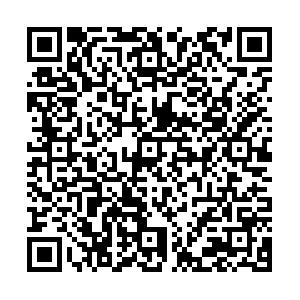Distribution and Influencing Factors of Kolb Learning Style Type among Medical Students
-
摘要:
目的 调查并探讨医学专业学生的Kolb学习风格类型偏好及潜在的影响因素,以针对性地为医学专业教学改革提供理论依据。 方法 采用Kolb学习风格量表并设置了10个潜在相关因素选项对国内5所医学院校416名医学专业学生的学习风格偏好及潜在影响因素进行调查。 结果 医学专业学生 的Kolb 学习风格类型中发散型、吸收型、聚合型、调节型分别占39.2%、27.2%、16.6%、17.1%;调节型和聚合型主动实践过程得分最高,而发散型和吸收型分别在反思观察学习过程中得分最高;医学专业学生学习风格的主要影响因素有所处学习阶段及父母对所学专业的态度,差异具有统计学意义(P < 0.05)。 结论 医学专业学生的Kolb学习风格偏好发散型,学习过程中加工信息能力较强。 Abstract:Objective To understand the distribution of Kolb learning style of medical students and analyze its influencing factors, so as to provide a theoretical basis for the reform of medical teaching. Methods Kolb Learning style Scale and 10 related factors were used to investigate the learning style preferences and potential influencing factors of 416 medical students from 5 medical colleges in China. Results Among the Kolb learning styles of medical students, diverging, assimilating, converging and modulating styles accounted for 47.1%, 44.9%, 4.7% and 3.3%, respectively; The accommodating and converging types scored the highest in the process of active experimentation, while the diverging and assimilating types scored the highest in the process of reflective observation learning. The main factors influencing the learning style of medical students are their learning stage and their families’ attitude towards medical learning P < 0.05 was considered statistically significant. Conclusion The Kolb learning style of medical students is divergent, and has a strong ability to process information in the learning process. -
Key words:
- Kolb learning style /
- Diverging /
- Assimilating /
- Converging /
- Accommodating
-
表 1 不同Kolb学习风格学生的不同学习阶段得分情况 [(
$\bar x \pm s $ ),分]Table 1. Scores of students with different Kolb learning styles in different learning stages[(
$\bar x \pm s $ ),scores]学习风格类型 CE得分 RO得分 AC得分 AE得分 调节型 29.37 ± 5.189 25.25 ± 3.467 25.58 ± 4.180 37.42 ± 4.295 发散型 31.00 ± 4.174 31.37 ± 3.883 28.02 ± 4.287 27.02 ± 4.909 聚合型 27.94 ± 6.907 28.90 ± 4.652 29.166 ± 5.324 31.50 ± 7.353 吸收型 25.75 ± 6.873 32.50 ± 3.445 31.64 ± 7.077 27.52 ± 5.156 表 2 医学生学习风格单因素分析[n(%)]
Table 2. Single factor analysis of Kolb learning style of medical students [n(%)]
项目 人数
(n = 416)调节型
(n = 71)发散型
(n = 163)聚合型
(n = 69)吸收型
(n = 113)χ2 P 性别 男 139(33.4) 24(5.8) 52(12.5) 28(6.7) 35(8.4) 2.067 0.559 女 277(66.6) 47(11.3) 111(26.7) 41(9.9) 78(18.9) 民族 汉族 347(83.4) 55(13.2) 141(33.9) 56(13.5) 95(22.8) 3.229 0.358 少数民族 69(16.6) 16(3.9) 22(5.3) 13(3.1) 18(4.3) 所处学习阶段 本科 336(80.7) 57(13.7) 123(29.8) 57(13.7) 99(23.8) 72.442 < 0.001* 硕士 58(13.9) 11(2.6) 24(5.8) 12(2.9) 11(2.6) 本科规培 22(5.3) 5(1.2) 16(3.9) 1(0.3) 0(0) 专业 临床医学 245(58.9) 43(10.3) 102(24.5) 33(7.9) 67(16.1) 4.494 0.213 非临床医学 171(41.1) 28(6.7) 61(14.7) 36(8.7) 46(11.1) 是否为独生子女 是 107(25.7) 24(5.8) 44(10.6) 13(3.1) 26(6.3) 4.710 0.194 否 309(74.3) 47(11.3) 119(28.6) 56(13.5) 87(21.0) 户口所在地 城镇 145(34.9) 27(6.5) 51(12.3) 25(6.0) 42(10.1) 1.552 0.670 农村 271(65.1) 44(10.6) 112(26.9) 44(10.6) 71(17.1) 是否为调剂 调剂 83(20.0) 14(3.8) 28(6.7) 13(3.1) 28(6.7) 2.490 0.477 非调剂 333(80.0) 57(13.7) 135(32.5) 56(13.5) 85(20.4) 选择专业意愿 自己选择 333(80.0) 53(12.7) 132(31.7) 60(14.4) 88(21.2) 127.421 < 0.001* 家人选择 57(13.7) 10(2.4) 23(5.5) 7(1.7) 17(4.1) 随便选的 26(6.3) 8(1.9) 8(1.9) 2(0.5) 8(1.9) 毕业后选择 本专业相关工作 226(54.3) 33(7.9) 102(24.5) 32(7.7) 59(14.2) 172.954 < 0.001* 继续深造 180(43.3) 34(8.2) 60(14.4) 35(8.4) 51(12.3) 改行工作 10(2.4) 4(1.0) 1(0.2) 2(0.5) 3(0.7) 父母态度 支持 384(92.3) 66(15.9) 153(36.8) 64(15.4) 101(24.3) 418.365 < 0.001* 中立 31(7.5) 4(1.0) 10(2.4) 5(1.2) 12(2.9) 反对 1(0.2) 1(0.2) 0(0) 0(0) 0(0) *P < 0.05。 表 3 医学专业学生Kolb学习风格潜在影响因素的多元Logistic回归分析结果
Table 3. Multiple Logistic regression analysis of potential influencing factors of Kolb learning style of medical students
自变量 因变量 OR 95%CI χ2 P 所处阶段
父母态度发散型 本科
硕士
本科规培
支持
中立
反对4.235
-
6.014
-
7.297
7.3621.112~15.513
-
1.415~20.246
-
2.234~10.902
1.134~12.93716.550
10.478
11.010
7.256
0.006
< 0.001*专业
父母态度聚合型 临床医学
非临床医学
支持
中立
反对4.381
-
5.317
-
5.7651.188~15.927
-
1.152~12.950
-
2.054~11.5948.745
9.285
7.216
0.125
< 0.001**P < 0.05。 -
[1] 廖菁,倪平,毛靖. 护理本科生学习风格现状及其影响因素[J]. 护理研究,2018,32(16):2536-2541. doi: 10.12102/j.issn.1009-6493.2018.16.013 [2] 鲁娟,戴伯军. 军医大学学员 KOLB 经验学习风格常模[J]. 中国健康心理学杂志,2019,27(7):1648-1655. [3] Fewster Thuente L,Batteson T J. KOLB’s experiential learn-ing theory as a theoretical underpinning for interprofessional education[J]. J. Allied Health,2018,47(1):3-8. [4] 马丽莉,岳鹏,马瑞英. 基于KOLB体验式学习理论的护理人文关怀课程教学设计及效果[J]. 医学教育管理,2023,9(02):217-223. doi: 10.3969/j.issn.2096-045X.2023.02.016 [5] 杨文婧,皇甫卫忠. 基于KOLB体验式学习理论在内科护理临床实践教学活动中的应用研究[J]. 内蒙古医科大学学报,2023,45(81):94-96. [6] 朱红梅,周川宇,陆静. 基于KOLB理论的体验式教学法在提高日间病房规培护士人文关怀能力中的应用[J]. 中国社区医师,2023,39(1):167-169. [7] 蔡岚,陆云,李晓婷. Kolb 学习模型在护生人文关怀教学中的应用研究[J]. 医药高职教育与现代护理,2022,5(2):130-134. doi: 10.3969/j.issn.2096-501X.2022.02.009 [8] Kolb A Y,Kolb D A. Experiential learning theory as a guide for experiential educators in higher education[J]. Experiential Learning & Teaching in Higher Education,2017,1(1):7-44. [9] 王清,杨京文. 基于KOLB 理论的中医儿科学学习风格与教学方法探讨[J]. 中国中医药现代远程教育,2017,15(15):36-39. doi: 10.3969/j.issn.1672-2779.2017.15.017 [10] 郭 瑛,梁 燕,阮 卉,等. 高 职护生学习风格与在线学习行为的对应分析[J]. 护 理 研 究,2018,32(19):3110-3113. [11] 陈星星,阳晓丽,肖归. 护理专科学生Kolb学习风格现状及影响因素分析[J]. 医学教育研究与实践,2020,28(6):994-997. [12] 韩钟霖,周晨,蓝荣芳. 从住院医师规范化培训现状思考医学教育的创新发展[J]. 中国社会医学杂志,2022,39(6):642-644. [13] 李曼,王维民,谢阿娜. 我国本科临床医学教育存在问题的思考[J]. 医学与哲学,2022,43(9):1-6. [14] 鲁娟,任风云,游晓华. 不同年级的军医大学临床医学专业学员的岗位认知度比较[J]. 当代医学,2021,27(12):16-21. doi: 10.3969/j.issn.1009-4393.2021.12.006 [15] 丁红梅,耿德勤. 医学教育改革下多元教学模式的探索[J]. 中国继续医学教育,2019,11(12):9-11. doi: 10.3969/j.issn.1674-9308.2019.12.004 -







 下载:
下载: 
